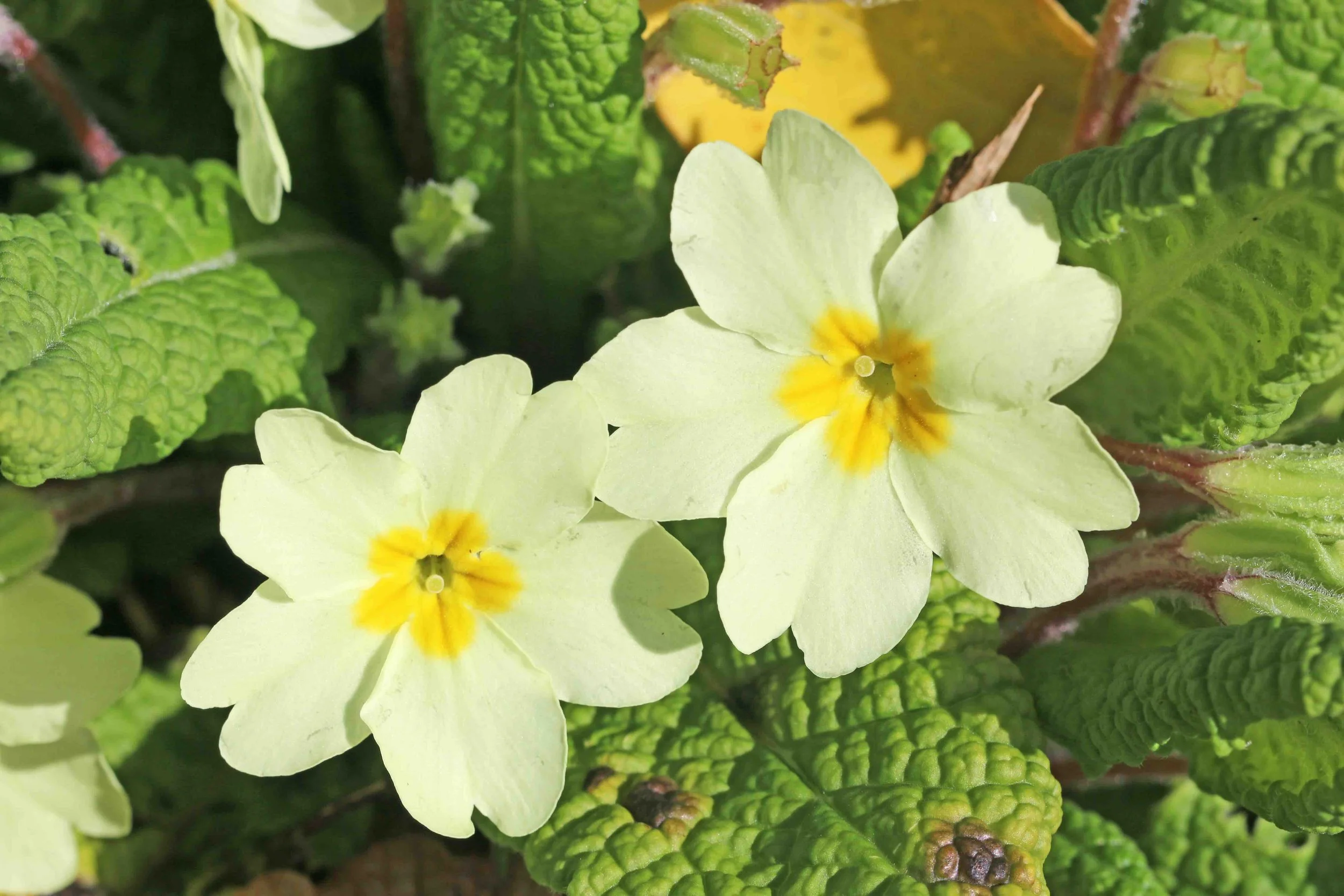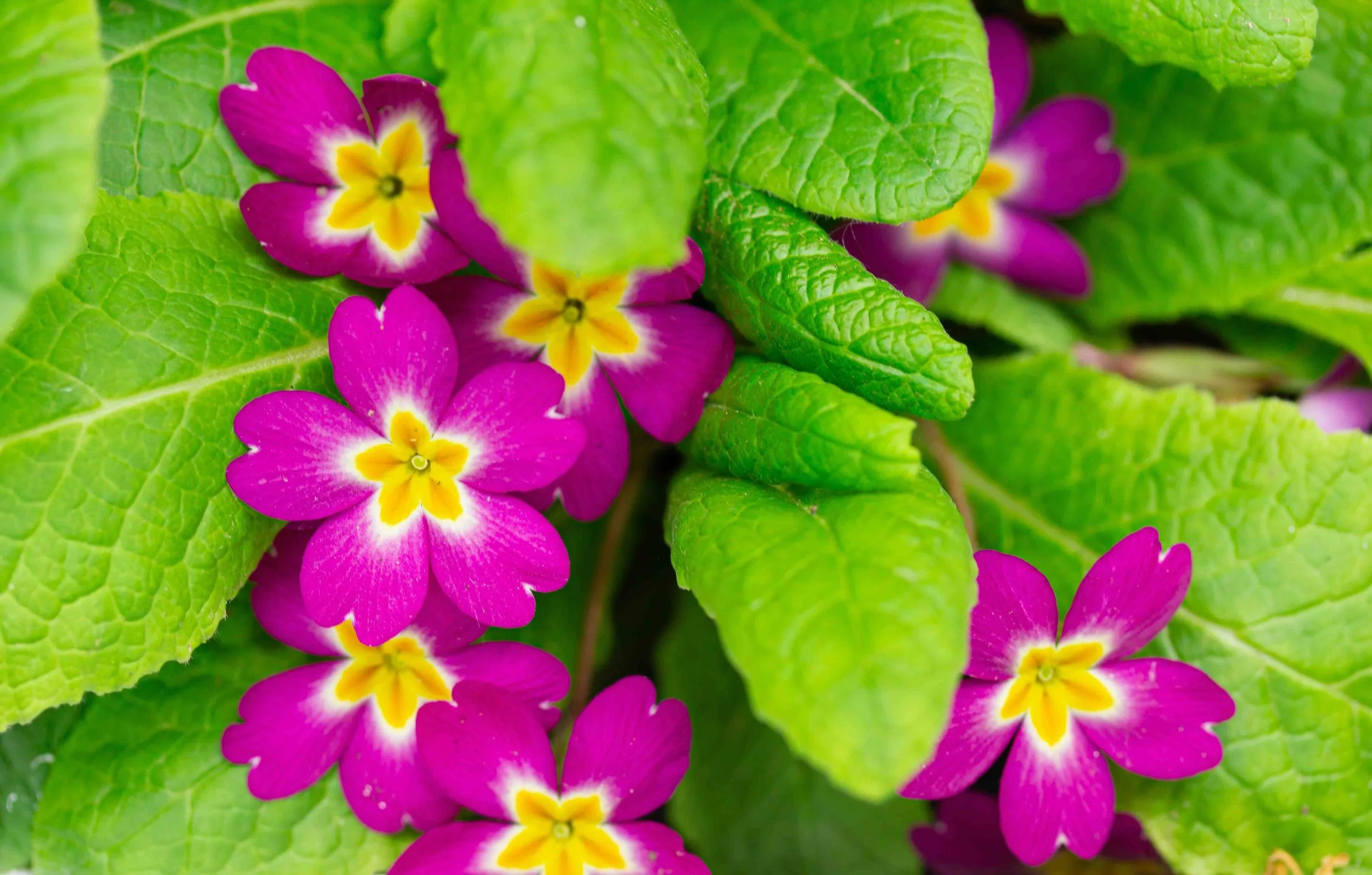
Primrose at the Shakespeare Garden
Primula Vulgaris
In some ancient legends, the primrose is connected to fairies and the ability to attract them. In fact, the primrose is sometimes called “fairy cup”. If you believe you’ve been led down the primrose path, you have Shakespeare to thank for the phrase from Hamlet. The primrose is one of the first flowers of spring and is described as delicate, pale, and never living to see the summer sun. Shakespeare associated the primrose with early death, a reference to an actual illness particular to young women of the time. Shakespeare also connects the primrose to a life of ease and pleasure, with banks of primrose leading to “everlasting fire”. Shakespeare mentions the primrose in eight of his plays and sonnets.
In Shakespeare’s time, the primrose was used for both culinary and medicinal purposes. It was believed that primrose tea would cure “phrensie” or frenzy. It was also associated with treatment of arthritis, insomnia, headaches, and wounds.
There are over 450 species of the genus primula. It thrives in zones 3-8, across Europe and North America. A perennial herb, it is one of the first bloomers in the spring, preferring a woodland setting with no more than two hours of direct sun. A moist rich soil is best for this plant. Primroses are a valuable source of early nectar for pollinators and are deer resistant. A versatile plant in the garden, it comes in a variety of rich colors.
Shakespeare references to Primrose:
-
Ophelia Speaking:
Like a puff’d and reckless libertine,
Himself the primrose path of dalliance treads
And recks not his own rede.
-
Queen Margaret Speaking:
I would be blind with weeping, sick with groans,
Look pale as primrose
With blood-drinking sighs,
And all to have the noble duke alive.
-
That die unmarried, ere they can behold
Bright Phoebus in his strength.


